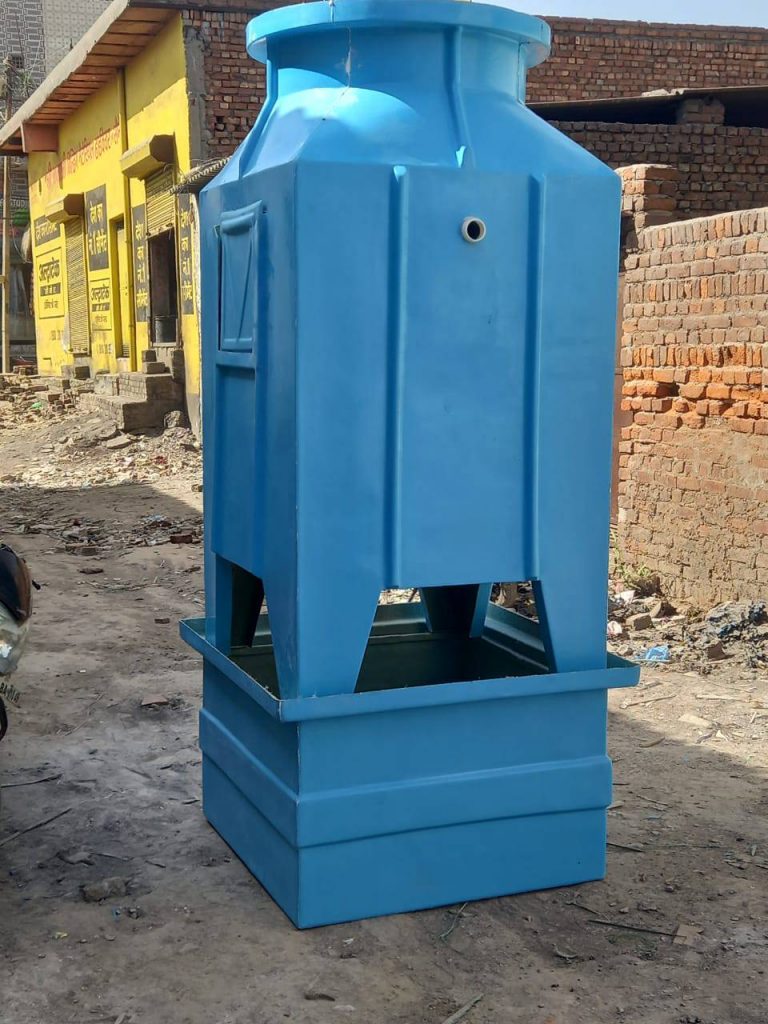Metal Cooling Towers: Steel vs. Stainless Steel – Pros, Cons & Applications
Metal cooling towers (primarily carbon steel or stainless steel) are widely used in industrial and commercial settings due to their strength, repairability, and cost-effectiveness. However, their performance depends heavily on material choice and environmental conditions.
Types of Metal Cooling Towers
- Galvanized Steel Cooling Towers
- Most common due to low upfront cost.
- Zinc coating provides moderate corrosion resistance.
- Used in HVAC, light industrial applications.
- Stainless Steel Cooling Towers
- Higher-grade alloys (304, 316L) for harsh environments.
- Resists corrosion, chemicals, and high temperatures.
- Common in pharmaceuticals, food processing, coastal areas.
- Hybrid Designs
- Steel frame with FRP or PVC components (e.g., fill media, drift eliminators).
Advantages of Metal Cooling Towers
1. High Strength & Durability
- Handles heavy loads (e.g., large fan systems, ice build-up in winter).
- Less prone to physical damage than FRP.
2. Cost-Effective (Short-Term)
- Galvanized steel is cheaper upfront than FRP or stainless steel.
- Easier to weld and repair than fiberglass or concrete.
3. Temperature Resistance
- Stainless steel can withstand high-temperature water (>200°F).
- Suitable for process cooling in refineries, steel mills.
4. Modular & Customizable
- Prefabricated designs speed up installation.
- Can be relocated more easily than concrete towers.
Disadvantages of Metal Cooling Towers
1. Corrosion Issues (Especially Carbon Steel)
- Galvanized steel corrodes in coastal, chemical, or high-humidity areas.
- Requires regular painting, coatings, or cathodic protection.
2. Higher Maintenance Than FRP or Concrete
- Rust scaling can clog water distribution systems.
- Pitting and galvanic corrosion in mixed-metal systems.
3. Heavier Than FRP
- Requires stronger support structures than fiberglass.
4. Stainless Steel = High Cost
- 316L stainless steel towers cost 2–3× more than galvanized steel.
Applications
- HVAC Systems (commercial buildings, data centres) – galvanized steel
- Power Plants (auxiliary cooling) – stainless steel or coated carbon steel
- Oil & Gas, Chemical Plants – 316L stainless steel
- Food & Beverage Processing (hygienic requirements) – stainless steel
Steel vs. Stainless Steel vs. FRP vs. Concrete
| Feature | Galvanized Steel | Stainless Steel | FRP | Concrete |
| Corrosion Resistance | ★★☆ (needs coatings) | ★★★★★ (316L best) | ★★★★★ | ★★★★☆ |
| Lifespan | 15–25 yrs | 20–30+ yrs | 25–30+ yrs | 30–50+ yrs |
| Maintenance | High (anti-rust) | Medium | Low | Very Low |
| Weight | Heavy | Heavy | Light | Very Heavy |
| Cost | $ (Low) | $$$ (High) | $$ (Medium) | $$$$ (Highest) |
Key Maintenance Requirements
- Galvanized Steel:
- Annual inspections for rust.
- Reapply protective coatings (epoxy, polyurethane).
- Replace corroded panels.
- Stainless Steel:
- Passivation treatments to maintain oxide layer.
- Avoid chlorine overexposure (causes pitting).
- Both:
- Regular water treatment to prevent scaling/biofilm.
Future Trends
- Advanced Coatings (ceramic, nano-coatings for steel).
- Modular Hybrid Designs (steel frame + FRP internals).
- Smart Corrosion Monitoring (IoT sensors for early rust detection).
Which to Choose?
- Budget-limited, low-corrosion environments? → Galvanized Steel
- Harsh conditions (chemicals, saltwater)? → Stainless Steel (316L)
- Long-term, low-maintenance solution? → FRP or Concrete
